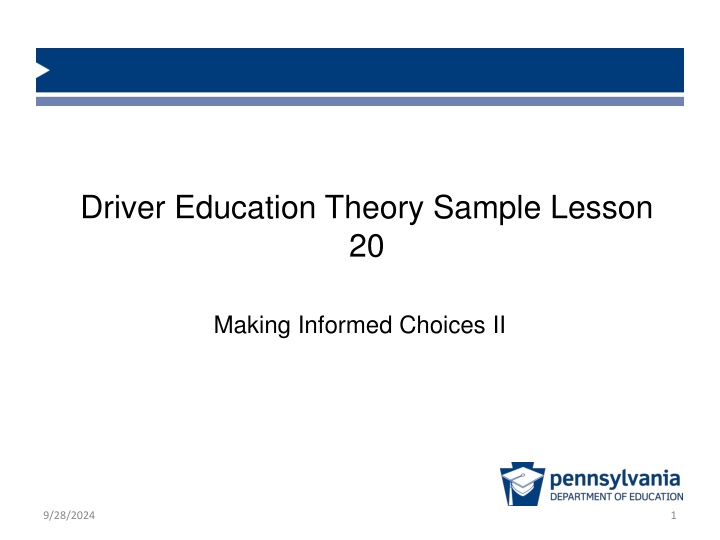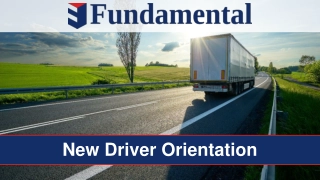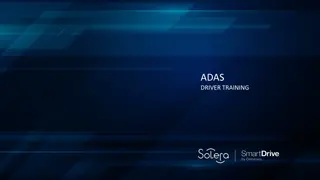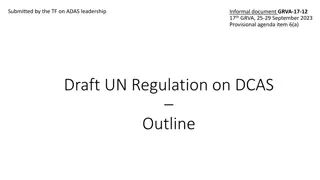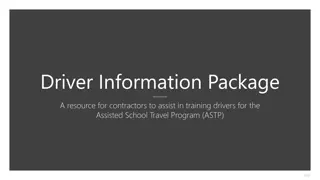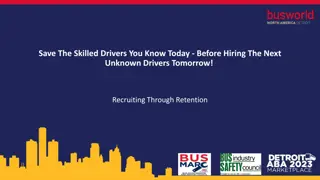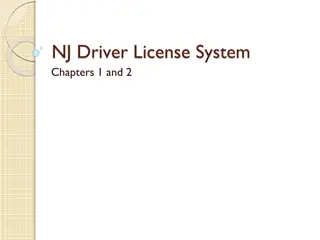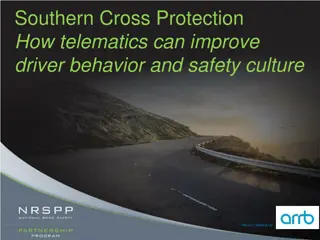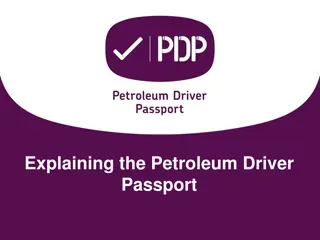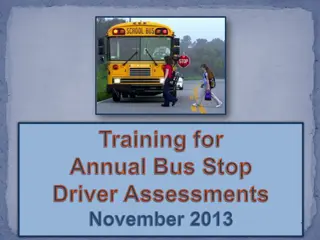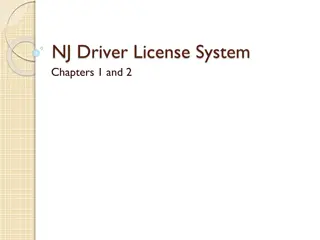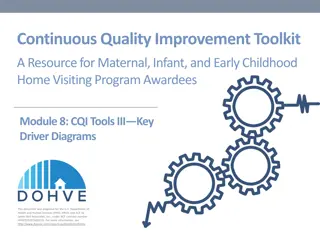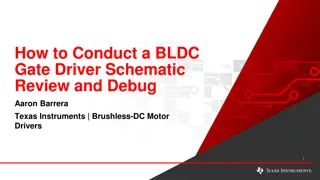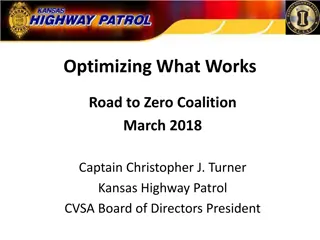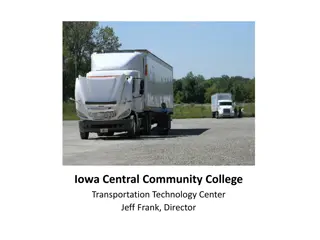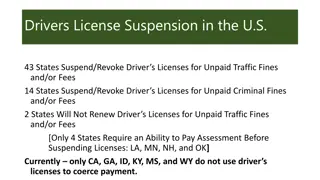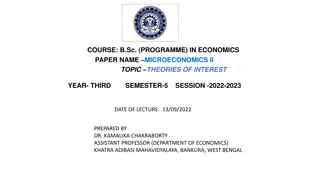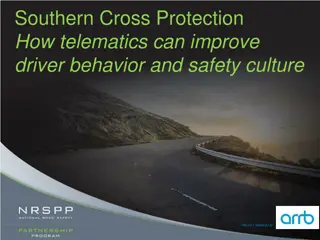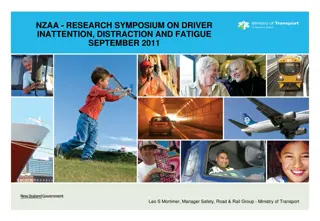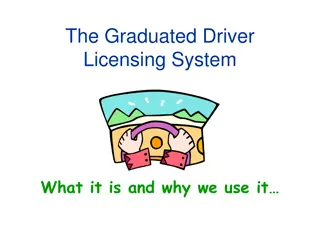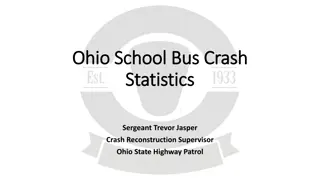Driver Education Theory Lesson: Making Informed Choices
This driver education theory lesson covers topics such as trip planning, state littering concerns, driver licensing, and the highway transportation system. The session assessment focuses on active and passive restraints, vehicle understeer and oversteer, traction loss, responding to different driving situations, and recognizing vehicle issues like overheating. Detailed answers and explanations are provided for each assessment question.
Download Presentation

Please find below an Image/Link to download the presentation.
The content on the website is provided AS IS for your information and personal use only. It may not be sold, licensed, or shared on other websites without obtaining consent from the author.If you encounter any issues during the download, it is possible that the publisher has removed the file from their server.
You are allowed to download the files provided on this website for personal or commercial use, subject to the condition that they are used lawfully. All files are the property of their respective owners.
The content on the website is provided AS IS for your information and personal use only. It may not be sold, licensed, or shared on other websites without obtaining consent from the author.
E N D
Presentation Transcript
Driver Education Theory Sample Lesson 20 Making Informed Choices II 9/28/2024 1
Sample Lesson Driver Responsibilities: making Informed Choices Topic 1 Trip Planning Topic 2 State littering Concerns Topic 3 Driver Licensing Topic 4 highway Transportation System 9/28/2024 2
Introduction Setting Assessment Trip Planning Littering issues Licensing The Highway transportation System 9/28/2024 3
Session Assessment Eight What is the difference between active and passive restraints Give an example of two active restraints Define Vehicle Understeer Define Vehicle Oversteer Explain how to recognize traction loss to front tires (understeer) Explain how do you respond to vehicle oversteer Name two traction loss technologies found on modern vehicles Explain how you would recognize and respond to a sudden acceleration in your vehicle Explain how you would recognize your vehicle was overheating Give four examples of vehicles with special handling characteristics on the roadway. 9/28/2024 4
Session Assessment Eight Answers What is the difference between active and passive restraints Active restraints are adjusted by the occupant, whereas passive restraints operate without occupant input Give an example of two active restraints Lap Safety belt harnesses, shoulder safety belt harnesses, and head restraints Define Vehicle Understeer The action a vehicle takes when the front tires have less traction than the rear tires 9/28/2024 5
Session Assessment Eight Answers Define Vehicle Oversteer The action a vehicle takes when the rear tires have less traction than the front tires Explain how to recognize traction loss to front tires (understeer) The vehicle goes straight ahead when the driver tries to turn the front wheels Explain how you respond to vehicle oversteer Direct Vision to Targeted Path of Travel, Activate Traction Control System, if Equipped (Ease off brake or accelerator if not equipped. Reestablishes rolling traction). Steer towards Targeted Path of Travel. Adjust steering input as Needed to Maintain Targeted Path of Travel to an Open Space Area. Light Progressive Acceleration (2 mph is goal) will Move Weight to Rear. (Traction Control System will adjust the speed and brakes automatically while activated) 9/28/2024 6
Session Assessment Eight Answers Name two traction loss technologies found on modern vehicles ABS, Traction Control, and ESP Explain how you would recognize and respond to a sudden acceleration in your vehicle The car keeps accelerating after you come off accelerator Keep eyes on roadway, shift to neutral, and bring car to side of road, prior to turning of ignition. Explain how you would recognize your vehicle was overheating The temperature gauge, temperature light, HEAT warning symbol, or steam coming from under the hood 9/28/2024 7
Session Assessment Eight Answers Give four examples of vehicles with special handling characteristics on the roadway Trucks, Trains, sports Utility Vehicles (SUV), Recreational Vehicles (RV), Motorcycles, Bicycles, Mopeds, Scooters, Construction Vehicles, Oversized Vehicles, Farm Machinery, Horse-drawn Vehicles 9/28/2024 8
Planning an Extended Trip Preparing the vehicle Loading considerations Basic and emergency equipment needs Personal preparation 9/28/2024 9
Trip Costs Lodging (hotel/motel) Meals Tolls Possible Repairs Fuel 1500-mile trip Car gets 22 mpg Fuel costs $1.60 per gallon Formula: 1500 X $1.60 = $109.09 22 9/28/2024 10
Map Reading City Maps North orientation Legend (explains the markings and symbols on the map) Street Index Letters/numbers reference location Determining Distance Map scale 9/28/2024 11
Map Reading State maps North orientation Legend Explains the markings and symbols on the map Town/City index Coordinates Letters/numbers reference location Maps of Major Cities Determining Distances Map scale Mileage chart Colored symbols 9/28/2024 12
Litter Definition Decayable waste from: Public or private establishment Person residence Restaurants including animal and vegetable material Non-decayable solid waste, except ashes Combustible material Paper, rags, cartons, wood, furniture, rubber, plastics, yard trimmings and leaves Non-combustible solid waste Glass, crockery, tin or aluminum cans, and metal furniture, discarded or worn out materials and machinery such as motor vehicles, motor vehicle parts and old appliances 9/28/2024 13
State Littering Law Under the State Litter Abstract Act, it is illegal to: Dispose of or allow someone else to dispose of litter at a place that is not a legal landfill Receive litter for the purpose of disposing it at a place that is not a legal landfill, regardless of whether the litter or the land on which the litter is to be disposed belongs to or is controlled by the person Transport litter to a place that is not a legal landfill for the purpose of dumping 9/28/2024 14
Dont Mess up State Littering fine up to $500 Repeated offense: fines up to $2,000 and 180 days in jail Failing to cover your load with a tarp Fine up to $200 for the 1st offense and up to $500 for repeat offenders Discarding trash more than 15 pounds Considered illegal dumping and steeper fines applied 9/28/2024 15
Cost of Littering It costs taxpayers about $14 million a year more than $16.00 per acre to clean up the litter on State highways. That money would otherwise go to Paving and repairing roads Completing beautification projects around the state 9/28/2024 16
Impact on Health A littered road and neighborhood more likely to be trashed than a pristine road Litter is ugly and decreases the perceived value of where you live Litter can also become hazardous to our soil and water A piece of trash that is tossed on the highway can end up floating down river Tossing a lit cigarette out the car window can start a fire 9/28/2024 17
Strategies Take personal responsibility for your own garbage and encourage others to do the same Keep a litterbag in your vehicle and use it Set an example for your neighbors, friends and children by putting your trash where it belongs Cover your load Adopt a highway 9/28/2024 18
Conserving States Natural Resources Accelerate Smoothly Brake Gently Keep your Vehicle maintained Recycle Old Oil and Fluids Carpool Others? 9/28/2024 19
Driver Licensing State Permit Requirements 16 years minimum age Parent/Guardian cosign Vision and Knowledge Test Adherence to GDL Program Good for 1 year Accompanied by a Qualified Supervising Licensee seated beside the driver for six months 9/28/2024 20
Driver Licensing State Licensing Requirements Successful completion of the state GDL program Penn DOT issued Road Test Zero Alcohol Tolerance High School Class Attendance 9/28/2024 21
Graduated Driver License Minimum License age is 16 6 months of practice driving 65 hours of driving practice 10 hours night time driving 5 hours inclement weather driving May move to Non-restricted License at 17 Comply to all GDL requirements Successfully passed a standard driver education program consisting of 30 hours of classroom theory 6 hours of behind-the-wheel driving No violations or crashes Full non-restricted License at 18 years old or older 9/28/2024 22
Highway Transportation System Agencies State General Assembly State House State Senate Enforcement Agencies Pennsylvania State Police State Vehicle Enforcement State Liquor Control Board Local Law Enforcement 9/28/2024 23
Highway Transportation System Agencies State Court System State supreme Court County Courts Local Courts Traffic Engineering and Maintenance Pennsylvania Department of Transportation Local Roadway Agencies 9/28/2024 24
Contact/Mission For more information on the (the topic of the presentation) please visit PDE s website at www.education.pa.gov The mission of the Department of Education is to ensure that every learner has access to a world-class education system that academically prepares children and adults to succeed as productive citizens. Further, the Department seeks to establish a culture that is committed to improving opportunities throughout the commonwealth by ensuring that technical support, resources, and optimal learning environments are available for all students, whether children or adults. 9/28/2024 25
